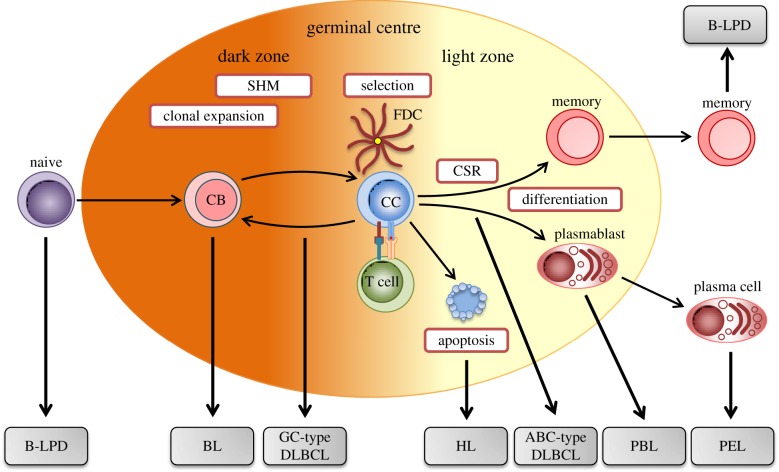Figure 1.
Germinal centre origin of different B cell lymphomas. Circulating naive B cells migrate to the secondary lymphoid organs where, upon encountering antigen, differentiate into centroblasts (CB) that undergo clonal expansion within the dark zone of the germinal centre. During proliferation, the process of somatic hypermutation (SHM) introduces point mutations into the variable region of the Ig heavy and light chain sequences, thereby generating B cells with variant B cell receptors (BCRs). Centroblasts subsequently differentiate into resting centrocytes (CC) and migrate to the light zone, where they are selected on the basis of antigen affinity. Only B cells with advantageous BCR mutations that improve antigen affinity will interact with follicular dendritic cells (FDCs) and receive the appropriate T cell survival signals necessary to evade apoptosis. Antigen-selected B cells can undergo further rounds of proliferation, mutation and selection by recycling to the dark zone. B cells within the light zone can undergo immunoglobulin class switch recombination (CSR), before exiting the germinal centre, either as a memory B cells or plasma cells. Due to the processes of SHM and CSR mediated by activation-induced cytidine deaminase (AID), germinal centre B cells are particularly susceptible to genetic damage. Thus, aberrant AID activity contributes to the chromosomal translocations and mutations that give rise to the different B lymphomas derived from B cells blocked at distinct stages of differentiation. PBL, plasmablastic lymphoma; PEL, primary effusion lymphoma.

